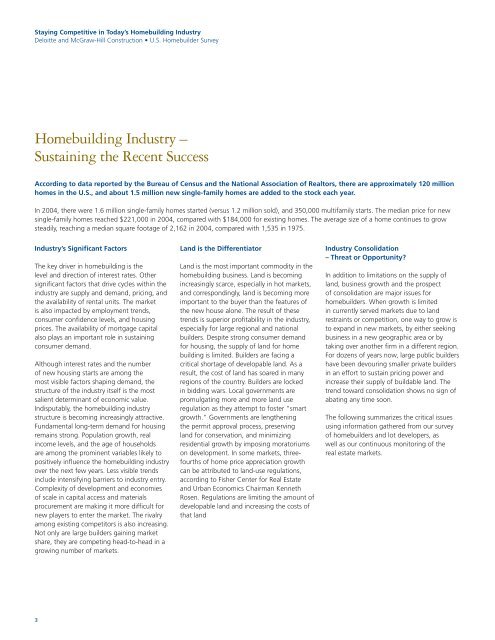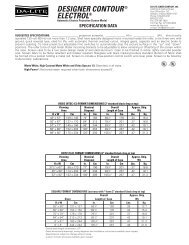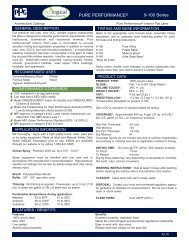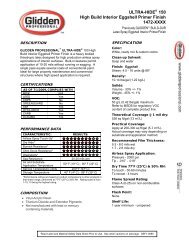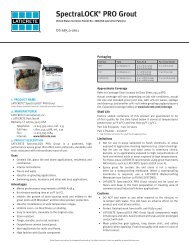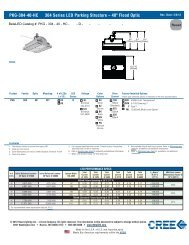Staying Competitive in Today's Homebuilding Industry.
Staying Competitive in Today's Homebuilding Industry.
Staying Competitive in Today's Homebuilding Industry.
Create successful ePaper yourself
Turn your PDF publications into a flip-book with our unique Google optimized e-Paper software.
<strong>Stay<strong>in</strong>g</strong> <strong>Competitive</strong> <strong>in</strong> Today’s Homebuild<strong>in</strong>g <strong>Industry</strong><br />
Deloitte and McGraw-Hill Construction • U.S. Homebuilder Survey<br />
Homebuild<strong>in</strong>g <strong>Industry</strong> –<br />
Susta<strong>in</strong><strong>in</strong>g the Recent Success<br />
Accord<strong>in</strong>g to data reported by the Bureau of Census and the National Association of Realtors, there are approximately 120 million<br />
homes <strong>in</strong> the U.S., and about 1.5 million new s<strong>in</strong>gle-family homes are added to the stock each year.<br />
In 2004, there were 1.6 million s<strong>in</strong>gle-family homes started (versus 1.2 million sold), and 350,000 multifamily starts. The median price for new<br />
s<strong>in</strong>gle-family homes reached $221,000 <strong>in</strong> 2004, compared with $184,000 for exist<strong>in</strong>g homes. The average size of a home cont<strong>in</strong>ues to grow<br />
steadily, reach<strong>in</strong>g a median square footage of 2,162 <strong>in</strong> 2004, compared with 1,535 <strong>in</strong> 1975.<br />
<strong>Industry</strong>’s Significant Factors<br />
The key driver <strong>in</strong> homebuild<strong>in</strong>g is the<br />
level and direction of <strong>in</strong>terest rates. Other<br />
significant factors that drive cycles with<strong>in</strong> the<br />
<strong>in</strong>dustry are supply and demand, pric<strong>in</strong>g, and<br />
the availability of rental units. The market<br />
is also impacted by employment trends,<br />
consumer confidence levels, and hous<strong>in</strong>g<br />
prices. The availability of mortgage capital<br />
also plays an important role <strong>in</strong> susta<strong>in</strong><strong>in</strong>g<br />
consumer demand.<br />
Although <strong>in</strong>terest rates and the number<br />
of new hous<strong>in</strong>g starts are among the<br />
most visible factors shap<strong>in</strong>g demand, the<br />
structure of the <strong>in</strong>dustry itself is the most<br />
salient determ<strong>in</strong>ant of economic value.<br />
Indisputably, the homebuild<strong>in</strong>g <strong>in</strong>dustry<br />
structure is becom<strong>in</strong>g <strong>in</strong>creas<strong>in</strong>gly attractive.<br />
Fundamental long-term demand for hous<strong>in</strong>g<br />
rema<strong>in</strong>s strong. Population growth, real<br />
<strong>in</strong>come levels, and the age of households<br />
are among the prom<strong>in</strong>ent variables likely to<br />
positively <strong>in</strong>fluence the homebuild<strong>in</strong>g <strong>in</strong>dustry<br />
over the next few years. Less visible trends<br />
<strong>in</strong>clude <strong>in</strong>tensify<strong>in</strong>g barriers to <strong>in</strong>dustry entry.<br />
Complexity of development and economies<br />
of scale <strong>in</strong> capital access and materials<br />
procurement are mak<strong>in</strong>g it more difficult for<br />
new players to enter the market. The rivalry<br />
among exist<strong>in</strong>g competitors is also <strong>in</strong>creas<strong>in</strong>g.<br />
Not only are large builders ga<strong>in</strong><strong>in</strong>g market<br />
share, they are compet<strong>in</strong>g head-to-head <strong>in</strong> a<br />
grow<strong>in</strong>g number of markets.<br />
Land is the Differentiator<br />
Land is the most important commodity <strong>in</strong> the<br />
homebuild<strong>in</strong>g bus<strong>in</strong>ess. Land is becom<strong>in</strong>g<br />
<strong>in</strong>creas<strong>in</strong>gly scarce, especially <strong>in</strong> hot markets,<br />
and correspond<strong>in</strong>gly, land is becom<strong>in</strong>g more<br />
important to the buyer than the features of<br />
the new house alone. The result of these<br />
trends is superior profitability <strong>in</strong> the <strong>in</strong>dustry,<br />
especially for large regional and national<br />
builders. Despite strong consumer demand<br />
for hous<strong>in</strong>g, the supply of land for home<br />
build<strong>in</strong>g is limited. Builders are fac<strong>in</strong>g a<br />
critical shortage of developable land. As a<br />
result, the cost of land has soared <strong>in</strong> many<br />
regions of the country. Builders are locked<br />
<strong>in</strong> bidd<strong>in</strong>g wars. Local governments are<br />
promulgat<strong>in</strong>g more and more land use<br />
regulation as they attempt to foster “smart<br />
growth.” Governments are lengthen<strong>in</strong>g<br />
the permit approval process, preserv<strong>in</strong>g<br />
land for conservation, and m<strong>in</strong>imiz<strong>in</strong>g<br />
residential growth by impos<strong>in</strong>g moratoriums<br />
on development. In some markets, threefourths<br />
of home price appreciation growth<br />
can be attributed to land-use regulations,<br />
accord<strong>in</strong>g to Fisher Center for Real Estate<br />
and Urban Economics Chairman Kenneth<br />
Rosen. Regulations are limit<strong>in</strong>g the amount of<br />
developable land and <strong>in</strong>creas<strong>in</strong>g the costs of<br />
that land<br />
<strong>Industry</strong> Consolidation<br />
– Threat or Opportunity?<br />
In addition to limitations on the supply of<br />
land, bus<strong>in</strong>ess growth and the prospect<br />
of consolidation are major issues for<br />
homebuilders. When growth is limited<br />
<strong>in</strong> currently served markets due to land<br />
restra<strong>in</strong>ts or competition, one way to grow is<br />
to expand <strong>in</strong> new markets, by either seek<strong>in</strong>g<br />
bus<strong>in</strong>ess <strong>in</strong> a new geographic area or by<br />
tak<strong>in</strong>g over another firm <strong>in</strong> a different region.<br />
For dozens of years now, large public builders<br />
have been devour<strong>in</strong>g smaller private builders<br />
<strong>in</strong> an effort to susta<strong>in</strong> pric<strong>in</strong>g power and<br />
<strong>in</strong>crease their supply of buildable land. The<br />
trend toward consolidation shows no sign of<br />
abat<strong>in</strong>g any time soon.<br />
The follow<strong>in</strong>g summarizes the critical issues<br />
us<strong>in</strong>g <strong>in</strong>formation gathered from our survey<br />
of homebuilders and lot developers, as<br />
well as our cont<strong>in</strong>uous monitor<strong>in</strong>g of the<br />
real estate markets.


